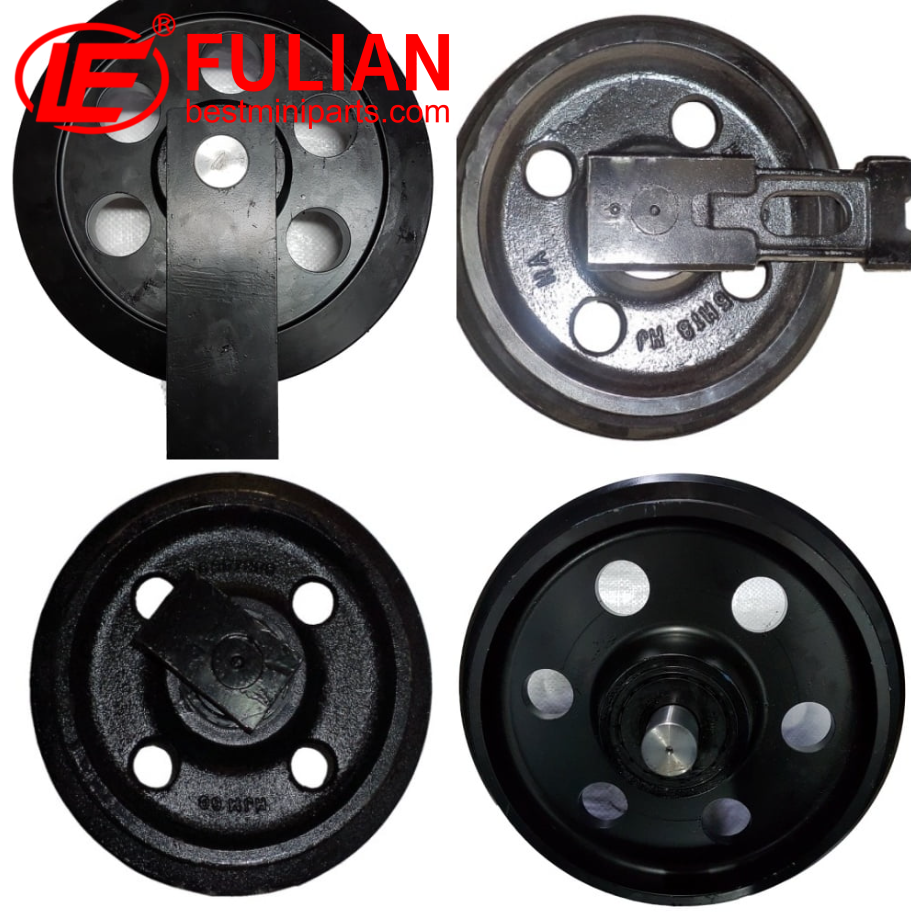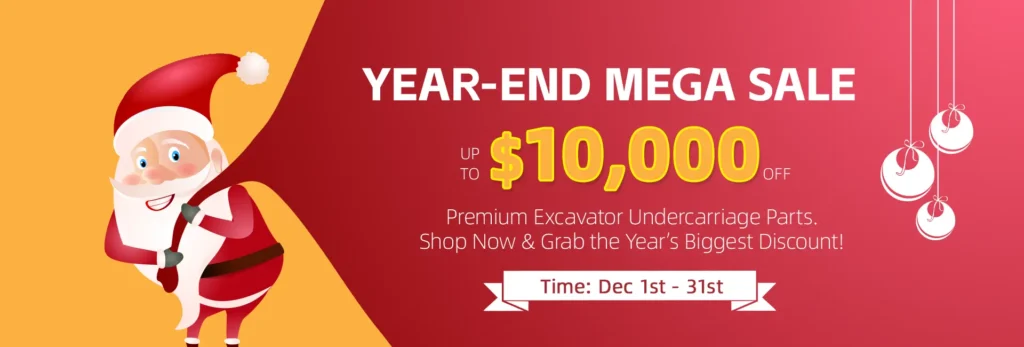Identifying damage to the sprocket on your heavy excavator is crucial for the maintenance of the machine. A damaged sprocket can lead to reduced performance, increased wear on other undercarriage components, and ultimately lead to machine downtime. Here are the key indicators that suggest your excavator’s sprocket might be damaged, which you need to keep an eye out for:
1. Visible Wear on Teeth:
The most obvious indicator of sprocket damage is visible wear on the sprocket teeth. The teeth should maintain a uniform shape. If they are rounded, sharpened, or show uneven wear, they may not engage with the track links properly, causing slippage and increased wear on both the sprocket and track.
The most obvious indicator of sprocket damage is visible wear on the sprocket teeth. The teeth should maintain a uniform shape. If they are rounded, sharpened, or show uneven wear, they may not engage with the track links properly, causing slippage and increased wear on both the sprocket and track.
2. Broken or Missing Teeth:
Check for any broken, chipped, or missing teeth on the sprocket. These conditions can drastically affect the sprocket’s ability to function and can even cause further damage to the excavator’s undercarriage components if not addressed promptly.
Check for any broken, chipped, or missing teeth on the sprocket. These conditions can drastically affect the sprocket’s ability to function and can even cause further damage to the excavator’s undercarriage components if not addressed promptly.
3. Altered Tooth Profile:
The profile of sprocket teeth can provide insights into wear patterns. A new sprocket tooth will have a flat top and symmetrical profile. Over time, the profile may become sharp or hooked, indicating that the sprocket is not meshing correctly with the track links.
The profile of sprocket teeth can provide insights into wear patterns. A new sprocket tooth will have a flat top and symmetrical profile. Over time, the profile may become sharp or hooked, indicating that the sprocket is not meshing correctly with the track links.
4. Excessive Noise During Operation:
Listen for noises such as grinding, clinking, or squealing during operation. These sounds can be indicative of a sprocket that is not engaging properly with the track assembly, which can be attributable to worn or damaged teeth.
Listen for noises such as grinding, clinking, or squealing during operation. These sounds can be indicative of a sprocket that is not engaging properly with the track assembly, which can be attributable to worn or damaged teeth.
5. Vibration or Jerky Motions:
Abnormal vibrations or jerky movements when the machine is driving can signify that the sprocket and track are not interacting smoothly, often due to damaged sprocket teeth.
Abnormal vibrations or jerky movements when the machine is driving can signify that the sprocket and track are not interacting smoothly, often due to damaged sprocket teeth.
6. Unusual Track Movement:
Tracks skipping or jumping, particularly under strain or when changing directions, can indicate that the sprocket is not correctly engaging with the track pins. This can be a result of wear or damage to the sprocket.
Tracks skipping or jumping, particularly under strain or when changing directions, can indicate that the sprocket is not correctly engaging with the track pins. This can be a result of wear or damage to the sprocket.
7. Difficulty in Turning:
If you experience resistance or difficulty in turning the excavator, it could be a sign that the sprocket is no longer able to transfer the rotational power efficiently to the tracks.
If you experience resistance or difficulty in turning the excavator, it could be a sign that the sprocket is no longer able to transfer the rotational power efficiently to the tracks.
8. Spacing Issues:
The spacing between the sprocket teeth should be consistent. If the spacing is off, or if debris is lodged between the teeth, it can lead to abnormal wear and potential damage.
The spacing between the sprocket teeth should be consistent. If the spacing is off, or if debris is lodged between the teeth, it can lead to abnormal wear and potential damage.
9. Loose Sprocket Bolts:
Check the tightness of the sprocket bolts. If they become loose, this can lead to movement of the sprocket on its hub, causing uneven wear and potential damage.
Check the tightness of the sprocket bolts. If they become loose, this can lead to movement of the sprocket on its hub, causing uneven wear and potential damage.
10. Chain Tension Issues:
Improper tension in the track chain can cause the sprocket to wear unevenly. Too much tension can lead to excessive strain, while too little can lead to increased wear due to slippage.
Improper tension in the track chain can cause the sprocket to wear unevenly. Too much tension can lead to excessive strain, while too little can lead to increased wear due to slippage.
11. Lubrication Problems:
A lack of proper lubrication can lead to increased friction and heat, causing the sprocket and other undercarriage components to wear out more quickly.
A lack of proper lubrication can lead to increased friction and heat, causing the sprocket and other undercarriage components to wear out more quickly.
12. Physical Damage:
Any visible cracks, deformities, or rust on the sprocket could compromise its structural integrity, making it imperative to assess damage.
Any visible cracks, deformities, or rust on the sprocket could compromise its structural integrity, making it imperative to assess damage.
13. Track Alignment:
Proper track alignment is essential for proper sprocket functionality. Misalignment can cause abnormal wear patterns on the sprocket teeth.
Proper track alignment is essential for proper sprocket functionality. Misalignment can cause abnormal wear patterns on the sprocket teeth.
If any of these signs are present, it’s advisable to conduct a closer examination of your excavator sprocket and the related components. Early detection of sprocket damage can prevent more extensive and costly repairs down the line and help maintain the overall health of your excavator’s undercarriage system. Always consult your operator’s manual for specific maintenance guidelines and, when in doubt, obtain an expert’s opinion to ensure safe and effective operation of your equipment.
Fulian Operation Team
2024.4.23








